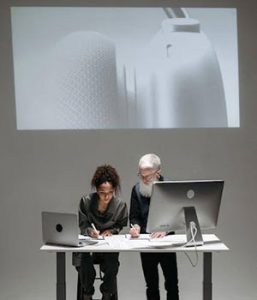
Optimizing Products for YOUR Customers
In today’s fiercely competitive market, customer satisfaction is more important than ever. Designing products that resonate with your target base should not only be just about meeting their needs but exceeding their expectations. It requires a deep understanding of their desires, pain points, and aspirations.
In this post we will delve into the art of making better products for customers, offering and offer actionable steps to help you maximize your product.
Understanding Your Audience

The start of creating exceptional products begins with understanding your target customer base. Conduct thorough market research to gain insights into their demographics, behaviors, and preferences. You can do this by showcasing prototypes of your product to gain invaluable feedback. Your engagement with your customers should be continuous through surveys, interviews, and reviews to understand your customers as best you can.
Solving Pain Points
The best products solve real problems. Having a crystal-clear idea of all the pain points your product relieves will not only help you in designing your product, but also with marketing. Clearly and effectively communicating why your product is important will go a long way to helping you pitch your products not only to your customers, but also to potential investors and retailers.
Iterative Development

Product development is a journey of continuous improvement. Using an iterative approach involves getting feedback every step of the way, rather than at the end of product development. By incrementally enhancing your product, you not only mitigate risks but also ensure that it evolves in line with changing customer needs. You should have people from your target demographic involved in as many stages of your product development as possible. This will help you save time, money, and fast track you to an excellent product.
Value Proposition
Similar to solving pain points, clearly identifying and conceptualizing the value proposition of your product will help guide you through the design process. Making sure you understand the answers to questions like, what about your product sets it apart from competitors? How does it fulfill the unique needs of your target audience? Communicate the benefits of your product succinctly, focusing on how it solves problems and adds value to people’s lives.
Sustainability and Environmental Consciousness

With the explosion of social media and the internet, there is a been a growing heightened social and environmental awareness. Because of this, consumers gravitate towards products that align with their values. Consider the sustainability and ethical implications of your product as you design it. Choosing materials that reduce environmental waste will go a long way to helping customers choose to pick your product. You should also try to design your product for sustainability. People like products that have longer life cycles they don’t have to consistently replace.
Market Trends and Technology
The landscape of consumer preferences is ever evolving. You should keep your ear to the ground to market trends, emerging technologies, and shifts in customer behavior. This will allow you to make sure you can keep your product relevant in a rapidly changing business environment.
The Journey to Product Improvement
Making better products for customers is not just a goal but a journey—a journey fueled by empathy, innovation, and a relentless commitment to customer satisfaction. By understanding your audience, you can maximize the success of your product for your customers and enjoy long term success.
If you’re looking for help with your product optimization or manufacturing at any stage, please contact us. We have over 30+ years of product manufacturing experience and have worked in many different markets with many different products to help our customers achieve their goals.
